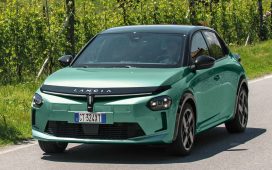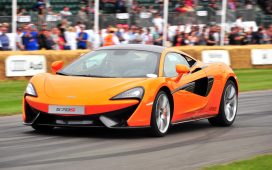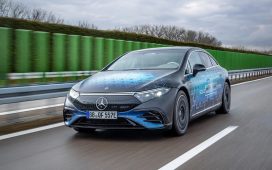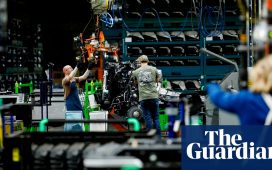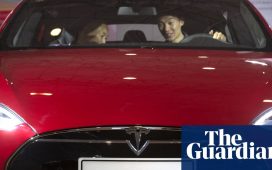Picture this: a world where electric vehicles (EVs) don’t have to compromise on performance due to the weight of their batteries. Mazda is turning this vision into a concrete plan, with a groundbreaking approach that could redefine the EV landscape. The Japanese automaker, traditionally celebrated for its spirited sports cars like the MX-5 Miata, is now venturing into uncharted territory with a recent patent that paves the way for a lighter, more efficient future.
Revolutionizing Vehicle Design with Carbon Fiber
At the heart of Mazda’s innovation is the development of a composite-chassis car, a design that significantly reduces vehicle weight. This is particularly crucial for EVs and hybrids, where hefty batteries can diminish performance and efficiency. The patent Mazda has secured outlines a vehicle utilizing a quasi-isotropic material made from carbon fiber laminations oriented in multiple directions. This technique is not just about shedding poundsâit’s about crafting a chassis with unparalleled strength and durability.
Mazda’s approach diverges from its sports car heritage, hinting at a four-door model that could potentially be a sedan. This shift underscores the automaker’s broader strategy to adapt to the era of electrification. By focusing on lightweight vehicle bodies and chassis, Mazda aims to counterbalance the inherent weight increase that comes with electric powertrains. This initiative is a testament to Mazda’s commitment to innovation, in collaboration with Nippon Steel Chemical & Material Co., Ltd., a partnership that brings together Mazda’s automotive prowess and Nippon Steel’s expertise in carbon fiber structures.
Charting a Course for the Future
The journey towards a carbon-chassis Mazda is still shrouded in uncertainty, with no clear indication of when such a vehicle will hit the market. However, this move is a clear signal of Mazda’s dedication to addressing one of the most pressing challenges in the electric vehicle sector: weight reduction. By pioneering the use of advanced materials and innovative design, Mazda is not just preparing for the future; it’s actively shaping it.
This endeavor is part of Mazda’s Sustainable Zoom-Zoom 2030 vision, aiming for carbon neutrality by 2050. The recent launch of the Mazda2 Hybrid in Malta, featuring a self-charging full hybrid powertrain developed in collaboration with Toyota, is a step towards this goal. With impressive fuel economy and reduced CO2 emissions, the Mazda2 Hybrid is a testament to what the future holds for Mazda’s lineup. The collaboration between Mazda and Toyota, leveraging each other’s strengths, is a strategic move that underscores the importance of partnerships in navigating the complexities of the automotive industry’s transition to electrification.
The Balancing Act: Performance vs. Sustainability
As Mazda ventures into the development of lighter, more efficient vehicles, the challenge will be to maintain the brand’s hallmark of driving pleasure. The transition to electric powertrains and the introduction of composite materials present an opportunity to redefine what performance means in the context of sustainability. Mazda’s efforts to innovate in chassis design reflect a broader industry trend towards vehicles that are not only environmentally friendly but also fun to drive.
The path Mazda is charting with its composite-chassis initiative may set a new standard for electric vehicles. By tackling the weight issue head-on, Mazda is addressing one of the most significant barriers to EV adoption and performance. This strategy, while ambitious, highlights Mazda’s commitment to its core values of innovation and driving pleasure, even as it navigates the complexities of a rapidly changing automotive landscape.

